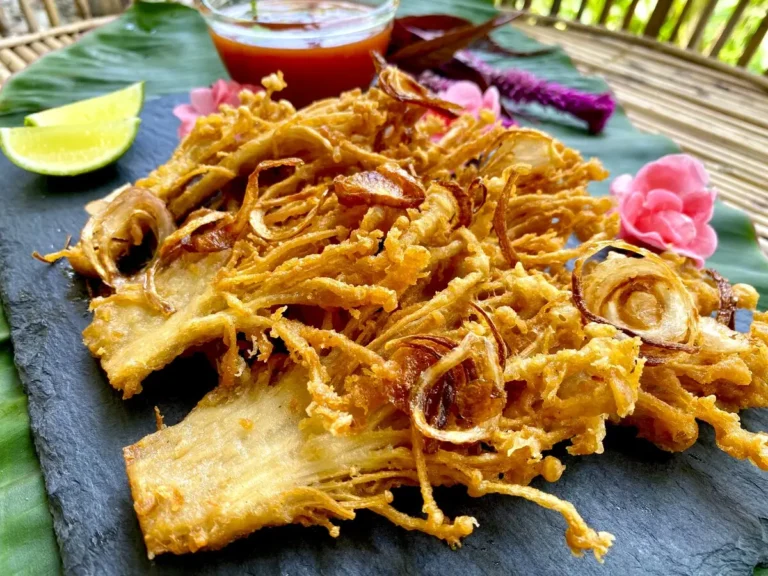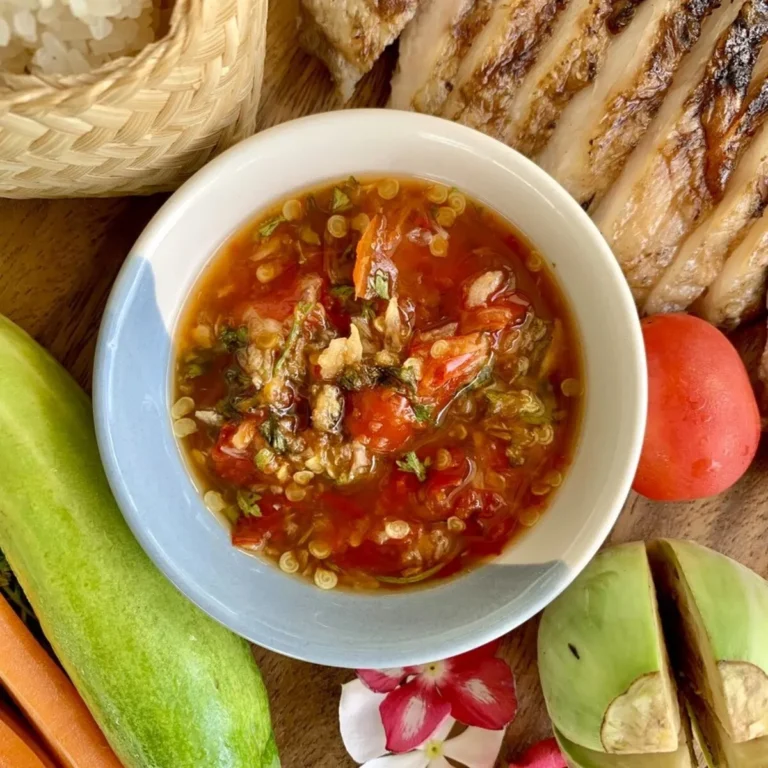This quick and easy pandan syrup recipe uses just 3 simple ingredients to create a fragrant, liquid sweetener. Bright green pandan leaves add a vanilla-like flavor, making it perfect for sweetening coffee, tea, or drizzling over desserts.
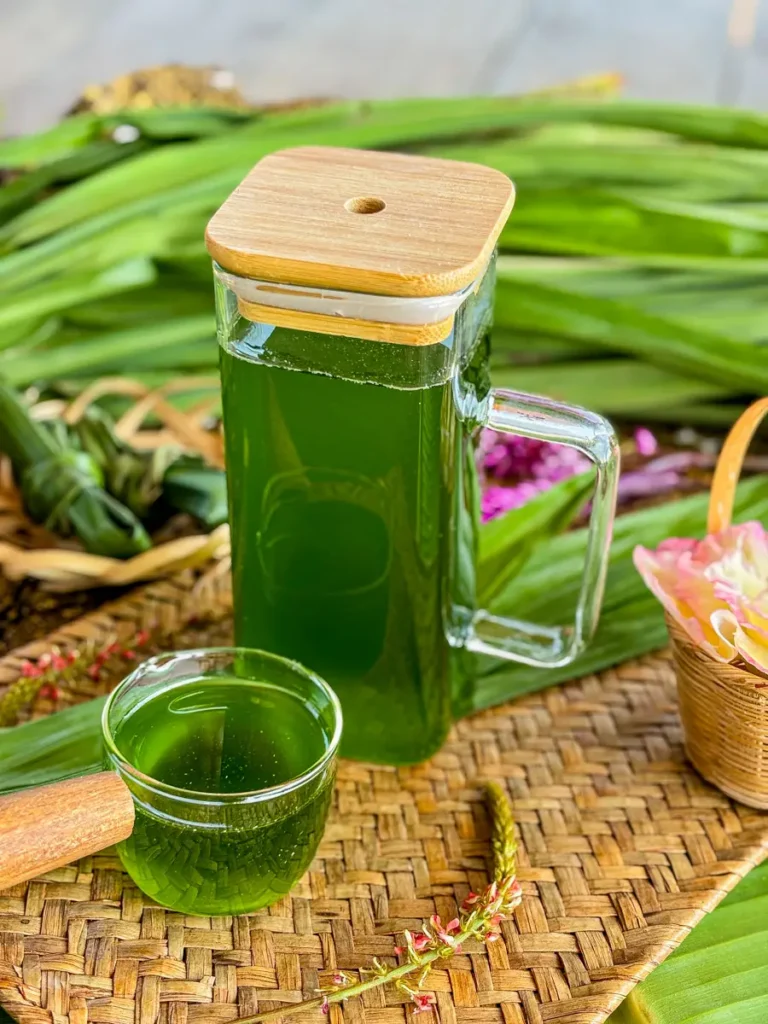
Tip: Learn more about pandan and use this simple syrup recipe to sweeten refreshing pandan drinks, pennywort juice, or soothing bael tea!
Pandan syrup is a sweet, fragrant syrup made from pandan leaves, sugar, and water. Its vibrant green color and floral, vanilla-like aroma make it popular in Southeast Asian desserts and drinks. Use it to sweeten iced beverages, drizzle over desserts, or as a natural flavoring.
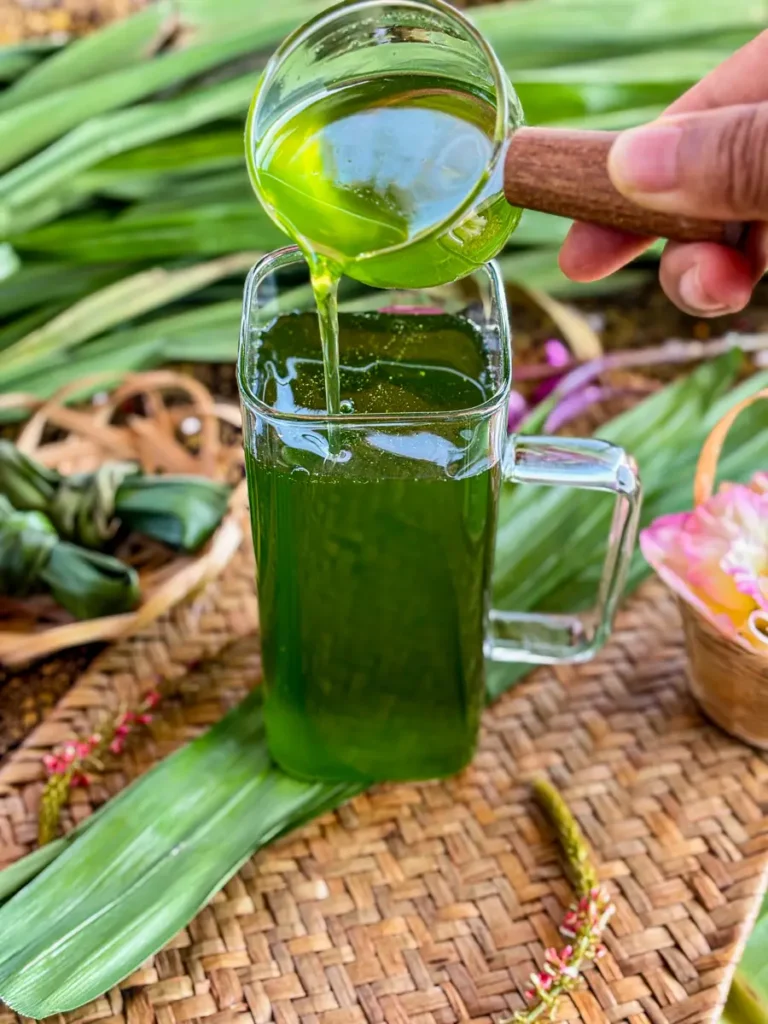
A key ingredient: pandan leaves
Pandan is a tropical plant with long, narrow, vibrant green leaves. Its subtle aroma blends notes of vanilla with a hint of floral sweetness.
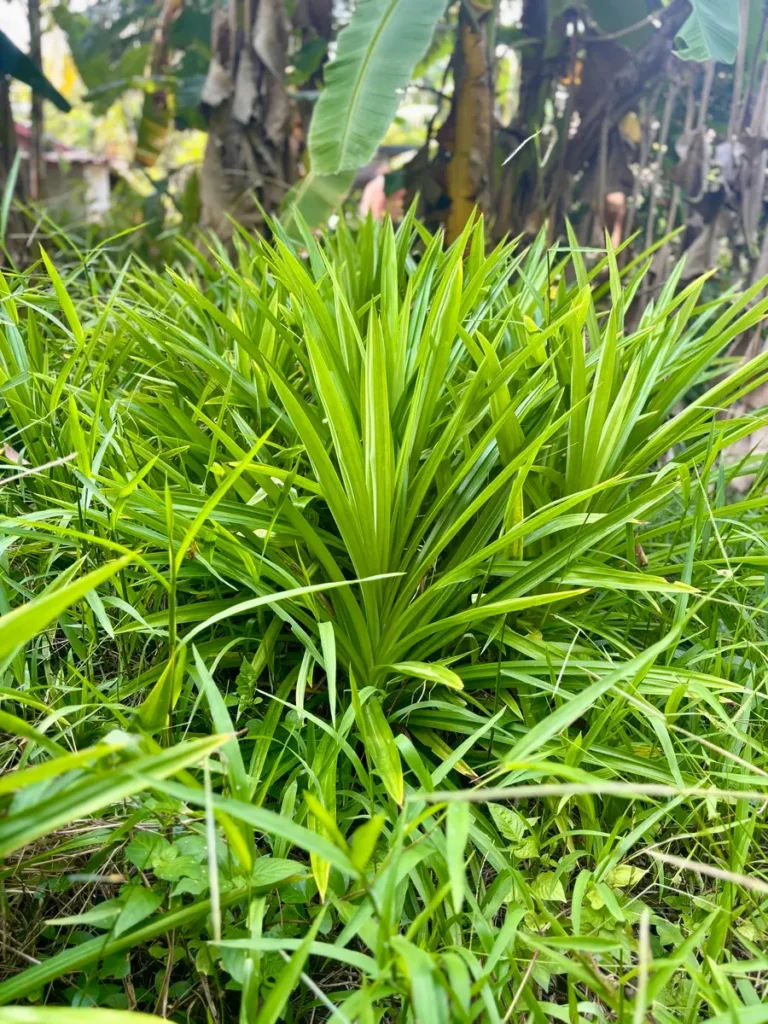
You’ll find fresh pandan leaves at most Asian grocery stores, or you can look for frozen ones if fresh ones aren’t available. They’re a staple in Thai cooking, so they should be pretty easy to find.
I planted pandan in my garden because it’s incredibly easy to grow in Thailand. They love the tropical climate and practically take care of themselves—perfect for a backyard herb.
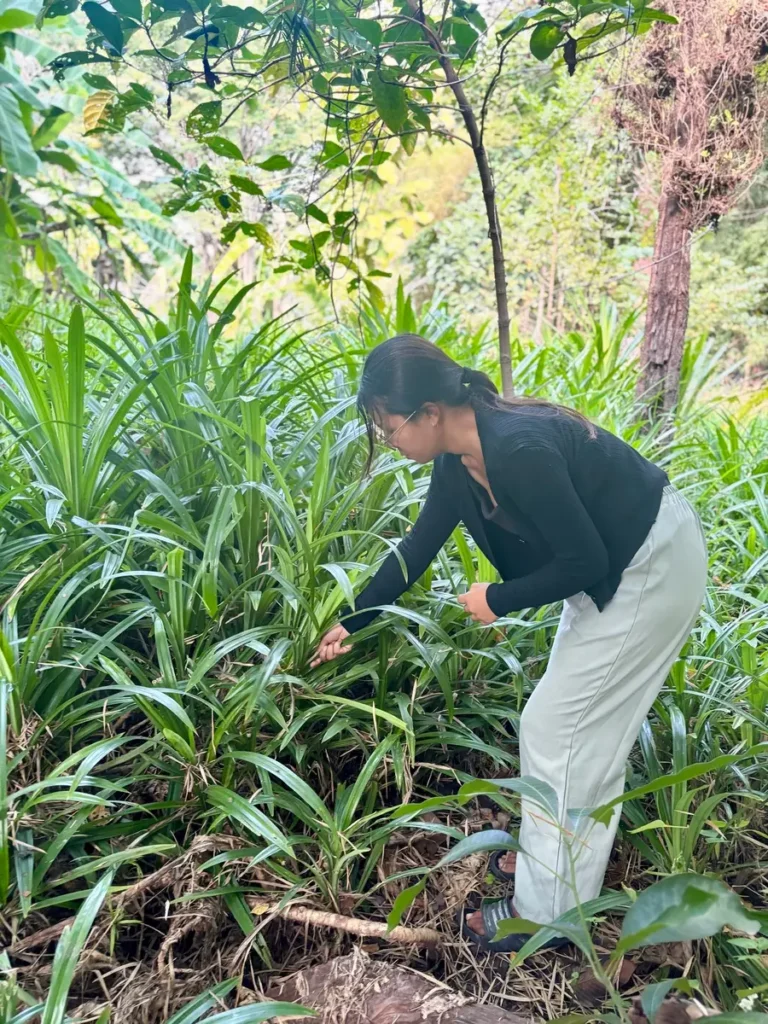
In Thai cuisine, pandan is often paired with coconut milk in dishes like like lod chong, khanom chan, and traditional pandan coconut jelly. Its flavor and aroma are used in many Thai sweets!
Ingredient notes
All the ingredients can be found at Asian markets or grocery stores. Check the recipe card below for precise measurements!

- Pandan leaves – If fresh leaves aren’t available, frozen pandan works just as well.
- White sugar – Use a 1:1 ratio of sugar to water.
- Water
How to make pandan syrup
Making this pandan simple syrup is easy with a 1:1 ratio of sugar to water!
Step 1: Roughly blend pandan leaves with water in a mixer to extract the pandan juice.

Step 2: Pour the pandan juice through a sieve cloth to filter. Discard the blended leaves and keep the filtered juice.

Step 3: Add the filtered pandan juice to a pot and mix it with sugar. Place the pot over low heat, stirring occasionally. The syrup is done when the sugar is completely dissolved and the syrup has slightly thickened. If the pandan flavor feels a bit mild to your liking, you can always add a few knotted pandan leaves to the warm syrup to boost the aroma and flavor.

How to store simple syrup
Simple syrup is best stored in a clean, airtight container, like a glass jar or bottle.
Keep it in the fridge to maintain freshness, and it will last up to 2 weeks. For infused syrups, like pandan, aim to use it within a week for the best flavor.
Fun ways to use this recipe
- Drizzle in a cocktail – Add sweetness to your favorite drinks.
- Pandan coffee syrup – Stir it into coffee for a fragrant, vanilla-like flavor.
- Refreshing drinks – Use it as a sweetener in Thai tea, bubble tea, or grass jelly boba.
- Pandan latte – Mix it into a latte for a creamy, aromatic upgrade.
- Over desserts – Drizzle over ice cream, cakes, or shaved ice for added flavor.
- Asian-inspired baking – Use it in cakes, cookies, or custards for extra aroma.
More recipes with pandan leaves
Love this easy pandan syrup recipe? Make my day by leaving a star rating and a comment below! Don’t forget to follow me on Facebook, Instagram, and Pinterest.
Best Pandan Syrup Recipe (Quick and Easy)

Ingredients
- 100 g pandan leaves, (chopped)
- 600 ml water
- 600 g white sugar
Instructions
- Roughly blend pandan leaves with water in a mixer to extract the pandan juice.
- Pour the pandan juice through a sieve cloth to filter. Discard the blended leaves and keep the filtered juice.
- Add the filtered pandan juice to a pot and mix it with sugar. Place the pot over low heat, stirring occasionally. The syrup is done when the sugar is completely dissolved and the syrup has slightly thickened. If the pandan flavor feels a bit mild to your liking, you can always add a few knotted pandan leaves to the warm syrup to boost the aroma and flavor.
Notes
- Use the nutrition card in this recipe as a guideline.





